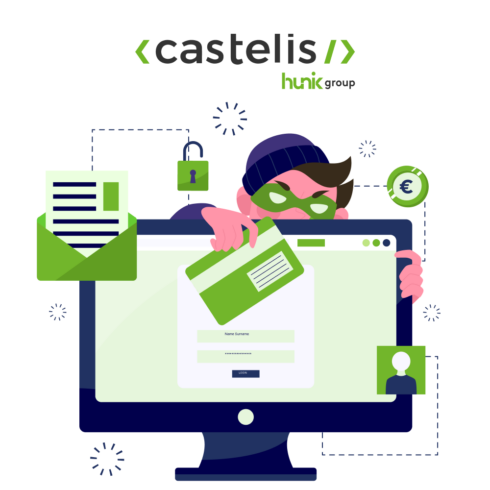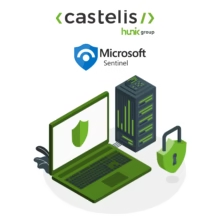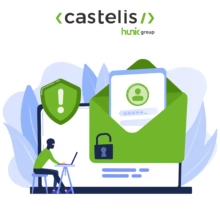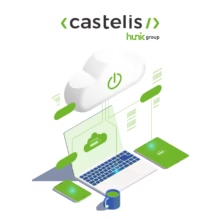
Phishing: how to protect your business and your employees
Phishing is a common cybercrime practice that consists in misleading users by pretending to be a trusted entity in order to obtain personal information, login credentials or financial data. Phishing attacks have become more sophisticated over time, making them more difficult to detect and prevent. However, there are steps that companies and their employees can follow to protect themselves against phishing attacks.
Phishing attacks, a growing threat with lasting consequences
Phishing attacks are a growing threat to businesses, with potentially expensive consequences in terms of financial and reputational losses. According to a study by IT security company PhishMe, companies reported a 65% increase in phishing attacks in 2020 compared to the previous year. A trend corroborated by SonicWall’s annual Cyber Threat Report revealing that cyber attacks have increased by 62% in 2020, with a particular increase in phishing attacks.
This is why it is crucial for businesses to put in place measures to prevent and protect against phishing. Companies can use online security solutions such as those offered by Area 1 Security and Cloudflare to strengthen their protection against phishing attacks.
In terms of the performance of Area 1 Security’s phishing protection solution, their technology is designed to proactively detect and prevent phishing attacks. According to their website, their technology can detect phishing campaigns within 60 minutes of their occurrence and block up to 99.7% of online phishing attacks. In addition, according to an independent study by security company SE Labs, Area 1 Security’s phishing protection solution had a 99% success rate in blocking phishing attacks, which demonstrates the effectiveness of their technology in protecting businesses from phishing attacks.
How to recognize phishing?
The ability to recognise a phishing attack is crucial to protect yourself against this online threat. Cybercriminals often use emotional manipulation techniques to get users to act quickly, without thinking. Here are some signs to look out for when a phishing attack occurs:
- The urgency: phishing attacks may contain emergency messages, such as security notifications, requests to reset passwords or threats to close accounts. Cybercriminals use these techniques to get users to act quickly without thinking.
- Requests for personal or financial information: phishing attacks may request personal information, such as social security numbers or login credentials, or financial information, like credit card numbers or verification codes.
- Unknown sources: Phishing attacks can come from unknown sources or from sender names that appear legitimate but are in fact fake. Cybercriminals use impersonation techniques to pretend to be a trusted company, such as a bank or service provider.
- Grammatical or typing errors: phishing attacks may contain grammatical or typing errors, which can be a warning sign that the message is fraudulent.
In general, it is important to be wary of messages that request urgent actions or personal or financial information. If you have doubts about the authenticity of a message, it is best not to click on links or provide sensitive information. It is also advisable to report suspicious messages to your company’s security team and help protect other users. In any case, for a company to rely on the unfailing vigilance of its employees to protect itself is inconsiderate. So there are solutions to filter attacks and drastically reduce the risks.
How to protect yourself against phishing?
Phishing prevention is essential to protect against this online threat. Here are some steps companies and employees can take to protect themselves against phishing:
Use online security solutions
Companies can use online security solutions such as those offered by Area 1 Security and Cloudflare to detect and prevent phishing attacks. Area 1 Security’s email security solution is an advanced technology that uses a combination of filtering and analysis techniques to detect and block phishing attacks.
Strengthen email security
Companies can strengthen email security by using spam filters, implementing email security policies, and training employees to recognise the warning signs of phishing. Employees should be instructed never to respond to suspicious emails and never to click on links or attachments from unknown senders.
Implement a “zero trust strategy”
Companies can implement a zero trust strategy to limit access to sensitive information and applications, trusting no one, even internal users. Implementing this strategy can include the use of dual authentication, encryption of sensitive data and real-time analysis of user activity.
Educate and train employees
Security training is essential to help employees understand phishing threats and recognise warning signs. Companies should provide regular online security training to keep employees on their toes. Employees should be trained on how to recognise the warning signs of phishing, verify the authenticity of email senders and report suspicious messages to the company’s security team.
In summary, phishing prevention is a continuous process that involves the implementation of online security measures and regular security training for employees. By taking these preventive and protective measures, companies can significantly reduce the risk of suffering financial and reputational losses due to phishing attacks.
To review your IS security and implement the best cybersecurity and performance solutions, contact our cloud experts.
Voir plus de Actualités

Why Microsoft Sentinel is Essential for Cyber Threat Management: A Practical Guide for CIOs

Top best practices to improve email security with DMARC

Cloudflare Zaraz Guide: Manage your third-party scripts at the Edge for better web performance
